
When Nikon first announced the D3 in August 2007, I told myself I wasn't going to buy one. I thought my reasons were good:
- I do a lot of wildlife photography, so I would miss the crop factor
- Full frame wouldn't really benefit me
- I'm not a pro, and don't need the extra resiliency that the D3 provides
- It's a lot of money to spend on a camera
- Who needs to shoot 9fps ISO6400 anyway?
So, on the day the D3 was announced along with the D300, I went to my local store, and ordered the D300. It also had great high ISO performance, right? And the AF was the same as the D3 in any case.....
But then the D3 was available on the shelves, people started buying it, and reviews appeared on the net. It turns out it's a really great camera! (which, to be honest, looking at the specs I didn't need someone else's review to tell me that). I got thinking, and realised that, based upon the lenses I had, I could sell off most of my DX format stuff, and still have 24-400mm covered. And with the money I would get for all the DX lenses and my two D200 bodies, I would be pretty close to the price of a new D3. So I did it.
My experiences with the D300 up until that point had been very good - the AF system was a significant improvement over the D200, and the lower noise at high ISO was also nothing to be sneezed at. But at concerts I was still uncertain about going above 1250iso, and I still couldn't rival the results coming from even the low end Canon 350d cameras. I decided in any case that I would keep the D300 as my second body, and it still would be used.
Enter the D3.....
The D3 is my first true 'pro' camera, and it oozes quality. From the moment I removed it from the box, it felt 'right' in the hand. All the buttons are in just the right place for my hands, and, although it is a heavier body to what I have been used to, it feels very balanced together with the 24-70mm f/2.8G lens that has become my 'standard' zoom.
The charger (MH-22) and battery (EN-EL4) are a lot more serious looking than then EN-EL3e/MH-18a combo with the D300. The MH-22 will even take two batteries, although they do charge one after another, rather than concurrently. But it does take a while for the battery to charge (around 4 hours), so I was left twiddling my thumbs whilst I waited for the charger to indicate 100%. So, for once, I started to read the instruction manual ;)
So it turned out that there were a number of things that would benefit me from the D3 after all. There has been a lot of discussion on various forums about Nikon's choice to use only 13MP on the full frame sensor, rather than the 20+MP that Canon is currently pushing. However this is where the beauty of the D3 lies - because there are less pixels in the larger sensor size, the individual pixels are bigger, and thus able to gather more light. Which is why the D3 is able to deal with low light conditions so well.

To put this to the test, I took the D3 out for it's first serious work out at the London Calling concert in the Paradiso in Amsterdam. This is a twice annual festival where new bands come over from the UK to try out their sound in front of the Amsterdam music crowd. The gig is split over two rooms, and as one band finishes playing in the 'grote zaal', another band starts upstairs in the 'kleine zaal'. Over the two nights there are over 20 bands playing, so more than enough opportunity to try out my new toy.
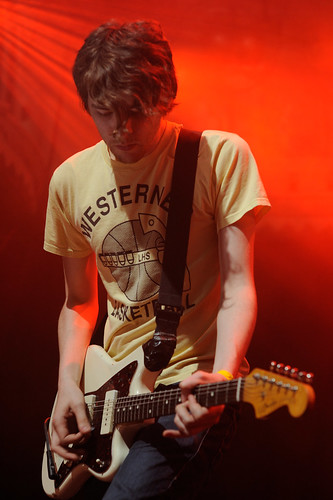
On a whole, I was very happy with the results. On the first evening, in my humble opinion, the lighting conditions were not so good, so I was forced to shoot between 2000 and 4000 iso for the whole evening. And the D3 didn't bat an eyelid. The following shot, of the Mystery Jet's guitarist, was taken at 4000iso, and noise is barely evident.
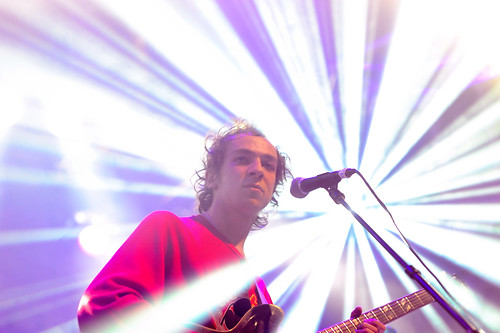
The lighting was improved for the second evening, and I was able to shoot most of the concerts at 1600iso, so the results were understandably clearer. As an example, the first two concert shots in this review were shot at 1600iso. If a professional concert photographer, or other sort of low light photographer, was looking for a new camera, I would have no worries in recommending the D3 for this kind of work.
So the full frame sensor had definitely solved my problem of having poor low light performance, and my secret envy for Canon shooters was no more (and the D3 makes a pretty good weapon in the mosh pit, if necessary)
As you may recall from my previous blog post, with DX format I pretty much always used the 50mm f/1.8D lens at concerts, which, due to the crop factor, acted as a 75mm. So for the D3 a logical choice was to shoot with the 85mm f/1.4D - a lens which did very well for most evenings' shooting. I also had the 50mm in my bag, and switched to it for one band's performance.
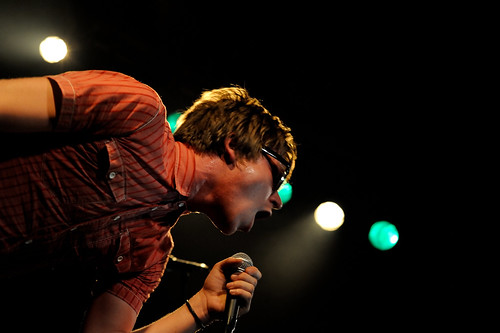
Aside from low light photography, the other area where I was eager to try out the D3 was for wildlife. So I packed up my D3, 200-400mm, and tc-14e and headed off to the Oostvaardersplassen. Here I experienced my first disappointment. Although my 200-400mm had worked very well with the D200 and given sharp results, it turned out that it had front focus issues with the D3. This was something I had already suspected with the D300, although I had not done enough testing to prove that this was the case, but now I had the same issues with the D3, I knew there was a problem. One of the nice features on the D3 is the 'AF fine tune' option. This allows you to move the focus point for a particular lens slightly back or forwards, and adjust the apparent sharpness of the lens. Since I shoot wide open a fair amount, it is very important to me that my lenses are able to focus spot on, and the 200-400mm clearly wasn't doing this.
Unfortunately, it seems that the AF fine tune is only useful for very fine adjustments, as even with fine tune set at the maximum, I still wasn't able to get sharp images at f/4, so I took the lens to my local Nikon service center last Wednesday. It was ready again for collection on Friday (fast service, Nikon!) so I will pick it up on Monday and test it out.
So, that test pronounced a failure, I took advantage of the good weather last weekend, and went along to Apenheul, a large monkey park near Apeldoorn in the Netherlands. I decided to stick with one lens for the day, and chose my 200mm f/2G VR, along with the tc-14e teleconverter in case I needed more length. I concentrated on the smaller monkeys, as these would give the AF more of a test, and I am happy to say I was impressed with the sharpness of the results. All shots were taken wide open or slightly stopped down, so between f/2 and f/4, and all were sharp. Both the golden lion tamarind shots in this review was even shot at 1600iso!
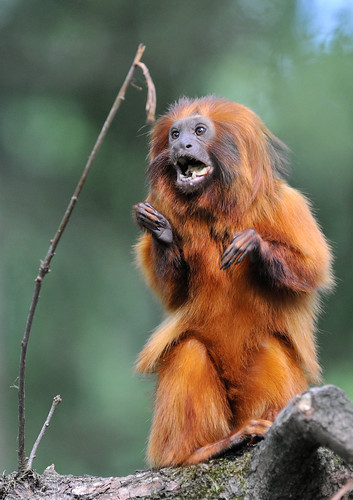
I will also be shooting a couple of weddings later this summer, and this, along with portraiture, is another of the major intended uses for my D3. So I took it along to the wedding of my friends, Cynthia and Stefano. I was there as a guest, and not the official photographer, so I could try it out in a relaxed manner. One of the very usable features on the D3 is the AutoISO functionality. In fairness this function has been on Nikon digital cameras for a while, but I have always avoided using it due to their poorer performance at higher ISOs. But now I can safely set the AutoISO to 3200iso, and choose my minimum shutter speed based upon the lens I am using. I then shoot aperture priority, and if there is not enough light to shoot at my chosen aperture at or above the minimum shutter speed I have specified, the D3 will automagically change the ISO value to compensate.
This worked well for me, and I was able to shoot the whole day at the wedding without messing around with my ISO settings. The below shot was taken in available light at 1600iso
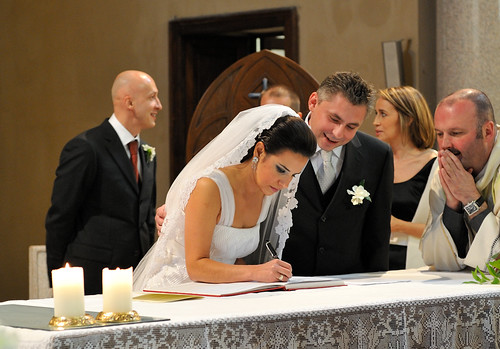
For most of the day I was shooting with the SB-800 speedlight set up to provide fill flash, and again the results were excellent. One thing that has surprised me with the D3 is that in most cases I don't need to make any major adjustments in post processing - the D3 just gets it right first time.

Battery life is also excellent, as should be expected with such a bulky battery, but I don't get anwhere close to the 3000+ shots that Nikon claim. However I think this is more to do with my use of VR lenses, and the chimping that takes place with any new camera than the camera.
Many people on the web have been knocking the D3 because of apparent vignetting (light fall off at the corners) for a number of full frame lenses when used in combination with the D3. The two main culprits here are allegedly the 24-70mm and the 70-200mm VR. Well I have both of these lenses, and have seen no major issues on this front. Maybe there is some sample variation here, but I just don't really experience any problems. Nikon has put a fix for the vignetting problem in the latest firmware update, but I have left that option turned off.
As an introductory offer, Nikon has been giving away a complimentary copy of Nikon CaptureNX with both the D3 and the D300. I have always tried to avoid using NX, as it is such a dog with regards to performance, however I have now started to use it, as it is definitely a better RAW converter for the D3 when compared with Adobe Camera RAW, especially with regards to noise reduction. So from that point, using the D3 has caused my workflow to slow down, but as I stated above, I seem to have managed to configure the D3 to get it right in camera for the most part, so my PP is cut down to a minimum anyway. Using CaptureNX also allows me to take advantage of Nikon's in-camera Active D Lighting, which, based upon my limited testing, is giving me good results.
So all in all, I am happy with the D3. Actually, after one month, I'm very, very, very happy :) It is all the camera I was hoping Nikon would come out with, and I think it will suit me well for a number of years. And with regards to the loss of the crop factor for wildlife photography? Well let's just say there is a little man in a factory in Japan building a 600mm VR with my name on it right now.....





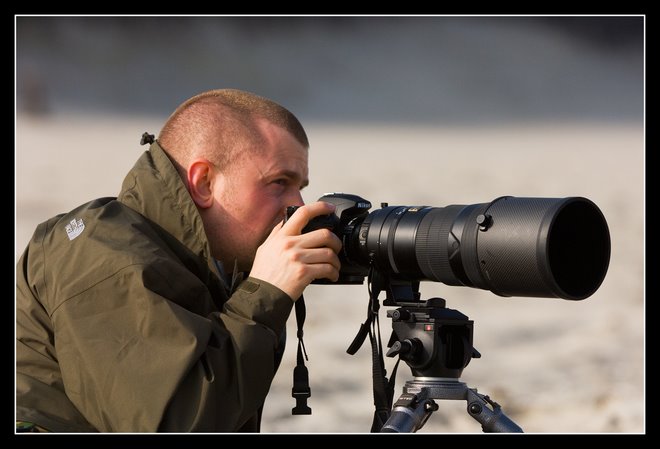
4 comments:
Simon,
Excellent personal review of the need and usage of the Nikon D3.
Now the 200-400mm repaired and the 600mm VR comming up sometime, is there any glass left on your wish list?
Albert
Well written article Simon and the D3 certainly seems to be meeting your needs! The "monkey" shot is a great example!
Eileen
Congrats with you new camera, and the pictures are superb !!
Told you you'd like the D3 ;)
Great review :)
Post a Comment